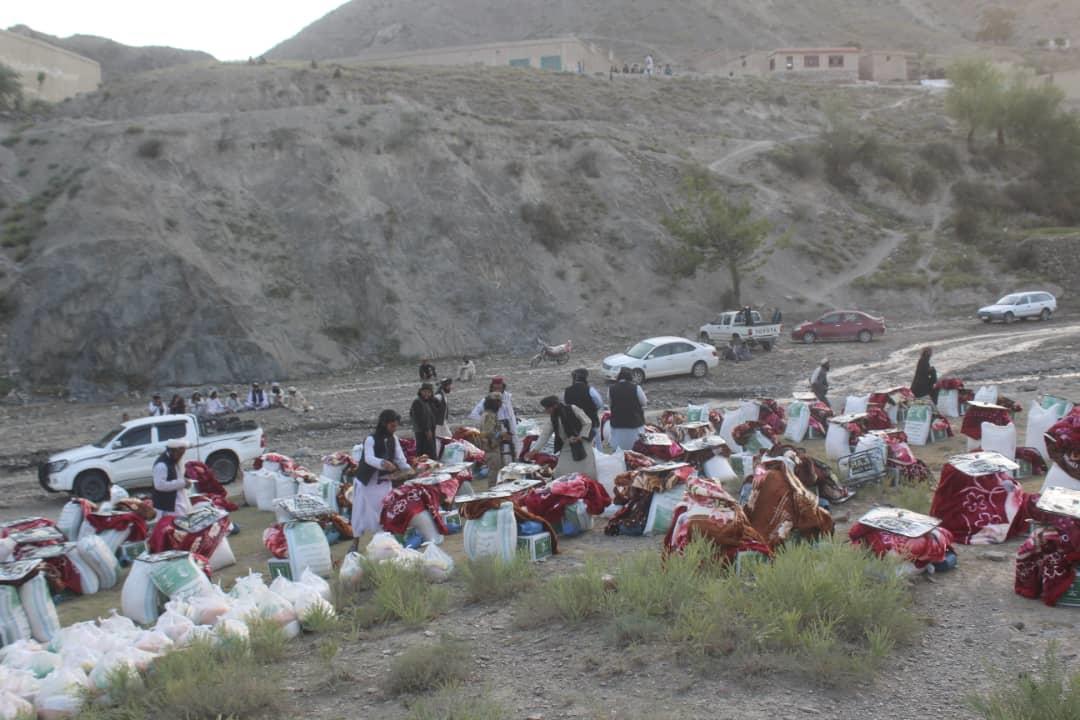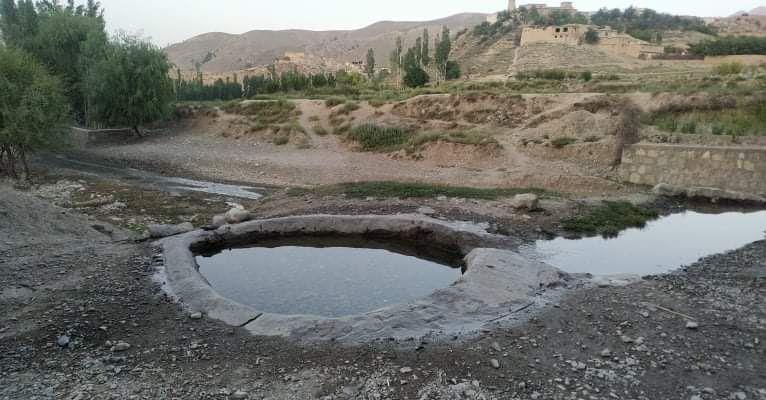(MENAFN- USA Art News)
As Afghanistan tries to come to terms with the extent of the devastation caused by the worst earthquake to hit the country in the past two decades, cultural experts say it will be impossible to determine any damage caused to archaeological sites in the foreseeable future.“As far as we know the registered cultural sites were not affected by the earthquake. However, it is impossible to know for sure unless a team of experts evaluate the area,” Abdullah, a senior historical expert with close ties to Afghanistan's Ministry of Information and Culture (who cannot be named because he is not authorised to speak to press), tells The Art Newspaper.“It just not the priority right now,” he adds.
Abdullah, says another challenge is that due to lack of security over the past two decades in the areas affected, no research or archaeological surveys were carried out.“We have no idea what was there,” Abdullah says.
A week ago, at around 1.30am local time on 22 June, a powerful 5.9-magnitude earthquake wrecked countless villages in eastern Afghanistan, killing more than 1,000 people and injuring at least 1,500 others.
The epicentre of the quake was 37km south-west of the city of Khost, according to the European-Mediterranean Seismological Centre. Paktika province's rural Gayan and Barmal districts and parts of rural Khost province were amongst the worst hit areas. Tremors from the quake were felt 200km away in the capital Kabul and in neighbouring countries Pakistan and India.
The lack of reliable roads and communication infrastructure delayed the initial aid response to the affected areas. What aid had arrived was delayed in distribution while the Taliban tried to organise its response.“We got there on Thursday and people had nothing: no electricity, no food or even water. Aid had arrived but it wasn't distributed,” a resident of Sharana, Paktika's capital, who asked to be identified only as Nawid, tells The Art Newspaper.
Cultural sites in Paktika Paktika is thought to be full of valuable historical sites; however, a lack of security in this region over the past two decades has made it impossible for research to be conducted by the Afghan government or foreign agencies.
Parts of Paktika and Khost have been under the Taliban's control even before the fall of the government last year. Located close to Pakistan's border, the locals have had strong ties to the Haqqani network, a Sunni Islamist militant group that was designated as a Foreign Terrorist Organisation in 2012 by the US government.

On Monday 27 June, aid arrived and was distributed to residents affected by the 5.9 magnitude earthquake in Paktika province. Photo: Samargul Samar
Several Haqqanis now hold cabinet posts in the Taliban's government. Sirajuddin Haqqani, the interior minister, who remains on the FBI's most wanted list, made a rare public appearance when he visited Paktika in recent days.“Paktika is one of Afghanistan's historic provinces. There are thought to be many archaeological sites here going back at least to the Kushan dynasty [first century BC to third century AD],” says Zulfiqar Moqbel, Paktika's former head of the Ministry of Information and Culture.
Moqbel says a few identified sites are evidence of a deep history that deserve further research. These include Patana in the centre of Sharana, a site that dates back to pre-Islam (over 1,400 years old); Reshke, which are possible archaeological ruin in Mata Khan; Qala Hasht Rokh, a fort presumed to have been constructed between 424 AD to 566 AD in the Urgun district; and Burj Gomol, a 300 or 400-year-old tower also in Urgun.“Over the last 20 years the previous government did not have access to these areas, so we know very little about them,” Moqbel says.
A former deputy minister at the Ministry of Information and Culture in exile, who asked to not be named, echoed Moqbel's comments and said when they tried to visit the areas they were attacked by insurgents. He recounts travelling to Barmal in 2010 for a meeting with the locals where he had plans to spend a day with them only for those plans to come to a halt when they came under rocket attacks.“It was so unsafe that we couldn't stay there. Even when the Americans, who had a base nearby, visited they could only stay for a few hours,” the former official says.
Patana in Sharana, Paktika Moqbel passionately shares the little information that is known about some of the sites.
Patana, from the pre-Islamic era, is a mount with fort-like features. Over the years a telecommunication tower has been built on top of the historic site and it was used as a military post.“It is possible that much of the site is underground. There was some evidence of a winery on the site, it is very interesting,” he says.

Patana, located in Sharana, Paktika's capital. The site is thought to be pre-Islamic but has not been studied by archaeologists and has gone mostly neglected. A military post and a telecommunication tower have been built on the site. Photo: © The Art Newspaper
According to Moqbel simply displacing the soil by a stroke of a hand will uncover evidence of artefacts in the grounds that surround the site. Moqbel's team had identified someone who had uncovered a statue from Patana and were in the process of claiming it from the individual so as to send it to Kabul's National Museum when the country fell to the Taliban.
A lack of access to the districts also meant that illegal excavations and evidence of valuable cultural sites were not investigated. Around two months before the fall of the government, Moqbel received reports of an illegal excavation at Reshke, a site in the Mata Khan district, approximately 35km from Sharana.
“We were told they were uncovering artefacts, gold and even statues. But there was nothing we could do,” a sombre Moqbel says. Due to the increased intensity of fighting between the army and the Taliban forces at the time no support could be spared to accommodate his plea for help.
Burj Gomal, a tower in the Urgun district, is another structure in Paktika that Moqbel hopes will be researched.“I think Burj Gomal is at least 300-400 years old, but we know nothing about it. It is sad,” Moqbel says.
The sites Moqbel lists, and other registered sites in Khost, were not in areas that have seen destruction by the earthquake although he and other experts agree that unless a qualified team evaluates them there is no way to be certain.
Mirzaka treasure in Paktia Evidence that there could be undiscovered sites of historical importance are found not too far off in Paktika's neighbouring province of Paktia. Mirzaka's treasure is a famous tale in Afghanistan's archaeological circles.
Research by Ketab Khan Faizi, the director of the Academy of Sciences at the International Centre for Kushan Studies in Kabul and a respected author, indicates that in 1947, a group of women accidentally found some coins in Mirzaka, about 30km north-east of the city of Gardez, the capital of Paktia, which led to the discovery of small rooms in the area. Thousands of coins, mostly silver and copper, from periods spanning around 700 years, were found to be stored there. Ten thousand coins were registered and later kept at Kabul's National Museum but it is thought that that was a fraction of what was found and that around 50,000 coins were taken by locals.

The Mirzaka site, 30km north-east of the city of Gardez, in Paktia province. At least 10,000 coins were discovered in this area in 1947 by accident. Photo: © The Art Newspaper
Between 1992-93, during the country's civil war after the collapse of the Soviet Union-backed Democratic Republic of Afghanistan, another treasure was discovered in Mirzaka. During this time, it is estimated that over four tonnes of metal coins, around 550,000 coins and 350kg of gold artefacts were discovered and sold on the black market. No official records of the findings were kept but, it is believed that among the treasure were coins from the Achaemenid Empire (550BC).
But that was not the end of the treasure. In 1997, when the country was taken over by the Taliban, valuable artefacts were again found in the area, including statues and golden ornaments. The findings were sold on the black market , according to Faizi.
“In 2005 a preliminary survey was carried out which identified 5,000 sites in the country but no survey has been carried out since then,” Faizi tells The Art Newspaper.“Every inch of Afghanistan has history and archaeological remains. There is a real need for a detailed survey and research of the whole country,” says Faizi.
Future According to Abdullah now that travel around the country is more secure and sites are accessible there are plans to carry out a survey of the whole country to create an inventory of Afghanistan's heritage sites.“For 40 years Afghanistan has been insecure and issues relating to our historical cultural sites have not received the right attention. We hope that we can start safeguarding our cultural sites,” he says.
To carry out the surveys and the research that Abdullah outlines requires funding that Afghanistan does not have. He admits that the funding so desperately needed to revive archaeology projects that can create jobs and safeguard historical sites will most likely have to come from foreign investors, which is a complicated political issue since the Taliban government has still not been officially recognised by the West.
“We hope that one day the security and politics are such that tourists can be attracted to visit Afghanistan,” he says.
MENAFN01072022005694012507ID1104465314